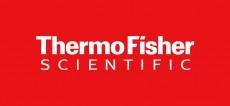3M exits triflic acid market
electrochemical fluorination process at the company's Cottage
Grove, site in Illinois, US.
A decline in demand and poor returns drove the decision to halt production of the ingredients, also known as trifluoromethane sulfonic acid, said 3M. Triflic acid is one of a small group of reagents commonly known as "super acids," and is used as a catalyst in the manufacture of pharmaceuticals, agricultural chemicals and polymers, while the anhydride form is widely used in fine chemical synthesis.
It is non-oxidising, has a high thermal stability, and is resistant to both oxidation and reduction, which makes it one of the more useful compounds in the super acid class. In the pharma industry, it is used to make a number of drug classes, including nucleosides, antibiotics, steroids, proteins and glycosides.
One of the reasons for 3M's decision is its focus on its perfluorobutane sulfonyl fluoride (PBSF) reagent, a multipurpose activating agent that has been designed to replace triflic anhydride (as well as DAST and SF4) in many pharmaceutical, agrochemical and fine chemical processes.
3M says that the PBSF's ready availability, low cost and stability make it very desirable in selective fluorination, cross-coupling reactions, as a blocking agent and as a leaving group for unactivated systems. Triflic anhydride is presently used in many of these applications, but its high cost rules out many synthetic approaches.
Additionally, says 3M, triflic anhydride reacts readily with water and has an unfavourable toxicity profile. In comparison, PBSF costs less (estimated at around half the price per pound), and requires only half the amount of triflic anhydride.
3M's exit from the business will force US customers of triflic acid to look for suppliers elsewhere. The only other two major players in the triflic acid market, estimated to be worth around $7-$10 million (€5.7-€8.1m) a year in the US, are Rhodia Pharma Solutions and Central Glass International of Japan, which recently expanded warehouse capacity in the US and plans to boost the production of triflic acid early next year.









